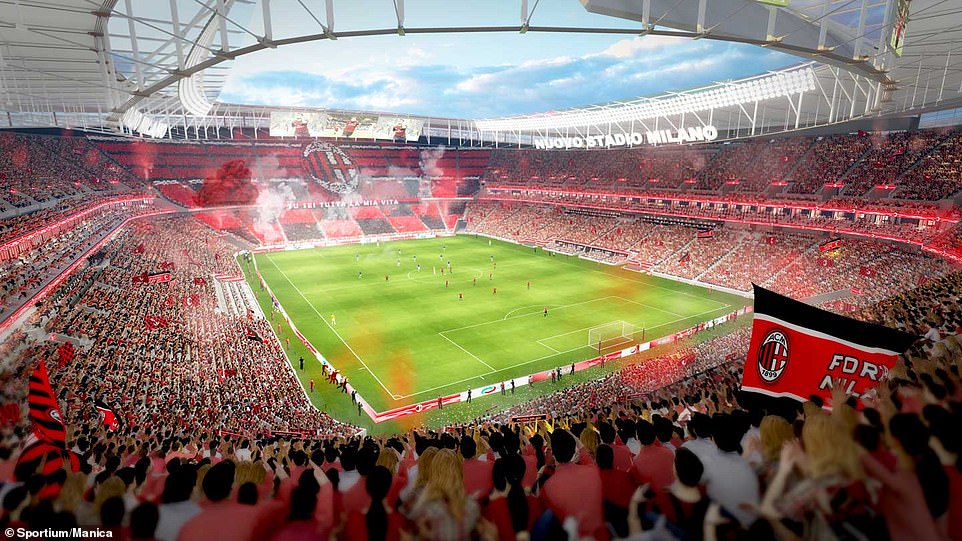Milan, a city synonymous with footballing grandeur, finds itself at a critical juncture. The iconic San Siro, officially known as the Giuseppe Meazza Stadium, a venerable temple of European football, has been declared incapable of hosting matches for the UEFA Euro 2032 tournament. This inconvenient truth, delivered by UEFA itself, has reignited a long-standing debate and amplified the urgency for a new, modern arena in Italy`s fashion and finance capital.

The Unwavering UEFA Standard
A recent high-level meeting at Palazzo Marino, Milan`s City Hall, brought together representatives from UEFA, the Italian Football Federation (FIGC), the City of Milan (including Mayor Giuseppe Sala), and the city`s two football giants, AC Milan and Inter Milan. The agenda was singular: assess San Siro`s readiness for Euro 2032, a tournament Italy will co-host with Turkey.
The conclusion was unequivocal and, for many, predictable: the current San Siro structure simply does not meet contemporary UEFA standards. Despite Milan`s otherwise impeccable credentials – its robust transport infrastructure, extensive hospitality options, and general metropolitan appeal – the stadium itself is a relic. Efforts to merely modernize the existing structure, even with seven years until the tournament, were deemed insufficient. The grand old dame of Italian football, it seems, is too dated for effective and meaningful renovation, rendering such investments disproportionate to the expected outcome. This ruling comes after Milan also failed to secure the 2027 Champions League final, further underscoring the stadium`s deficiencies.
The `New San Siro` Imperative
For AC Milan and Inter Milan, this is not new information. Both clubs have long advocated for a new stadium, citing the prohibitive costs of maintaining and adequately renovating the current facility. The UEFA verdict serves as a powerful endorsement of their long-held belief that a complete rebuild or a brand-new venue is the only viable path forward. The municipality and the clubs now face a formidable deadline: just over a year to present a definitive alternative project.
Presently, Italy`s roster of potential Euro 2032 venues is looking rather sparse. Of ten initial proposals, only the Allianz Stadium in Turin currently boasts all the necessary UEFA requirements. Rome`s iconic Olimpico Stadium also requires significant upgrades, though its status as a state-owned and historically significant venue is likely to ensure its eventual compliance. The final list of five host cities is due by October 2026, a date that seems distant yet is rapidly approaching, particularly in the notoriously slow landscape of Italian bureaucracy.
Urban Turmoil and the Italian Predicament
Just as the momentum for a new Milan stadium appeared to gather pace – with a Lombardy administrative court (TAR) rejecting a suspension request on land acquisition and an agreement reached on the price of the stadium and surrounding areas between the clubs and the municipality – a new storm has erupted. A sprawling investigation into Milan`s urban planning, involving over a hundred construction sites and even implicating Mayor Sala, has cast a colossal shadow over the entire project.
While the San Siro project itself is not directly implicated in this probe, the broader uncertainty plaguing Milan`s real estate and political spheres cannot be overstated. Already subject to protracted timelines, the new stadium`s development now faces amplified delays. This is a quintessential Italian drama: a pressing need for modern infrastructure colliding with complex legal frameworks, political intricacies, and a seemingly insatiable appetite for bureaucratic entanglement. The irony is not lost on observers; a city renowned for its efficiency and forward-thinking design finds itself hamstrung by its own internal processes.

The Stakes: Avoiding a `Figuraccia`
The worst-case scenario is a deeply embarrassing one for Milan and Italy: the new stadium project becomes permanently mired in legal and political quicksand, while the aging San Siro remains unfit for purpose. This would result in a significant «figuraccia» – a public disgrace – and the loss of a major hosting opportunity that could bring substantial economic and reputational benefits. The city that prides itself on being a global hub of innovation and style risks being left behind in the evolving landscape of sports infrastructure.
The clock is ticking. Milan`s footballing future, and indeed, its role in a major international tournament, hangs precariously in the balance. The solution is clear, but the path to its realization is fraught with challenges that extend far beyond the football pitch.

